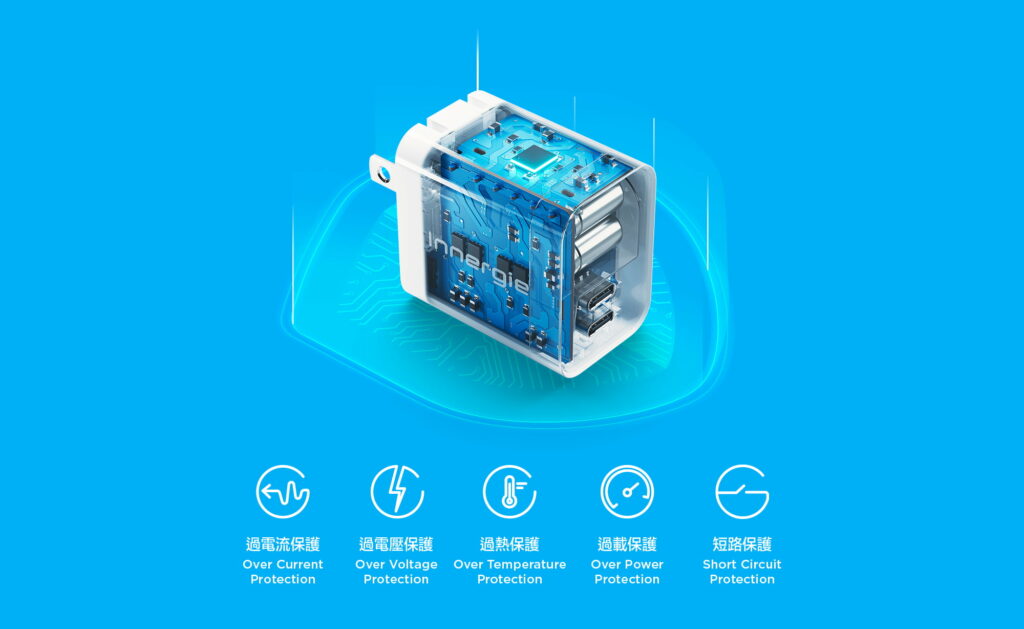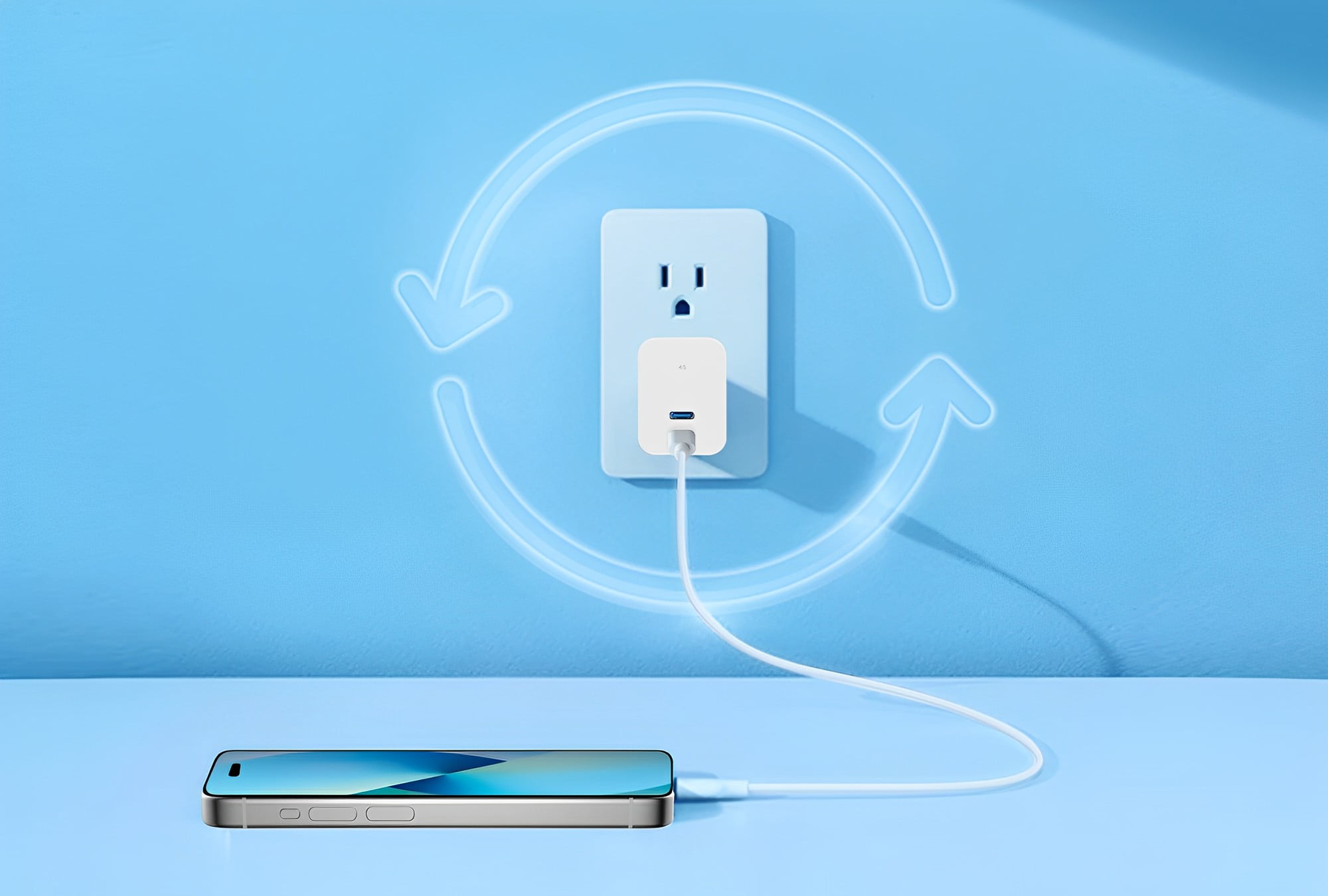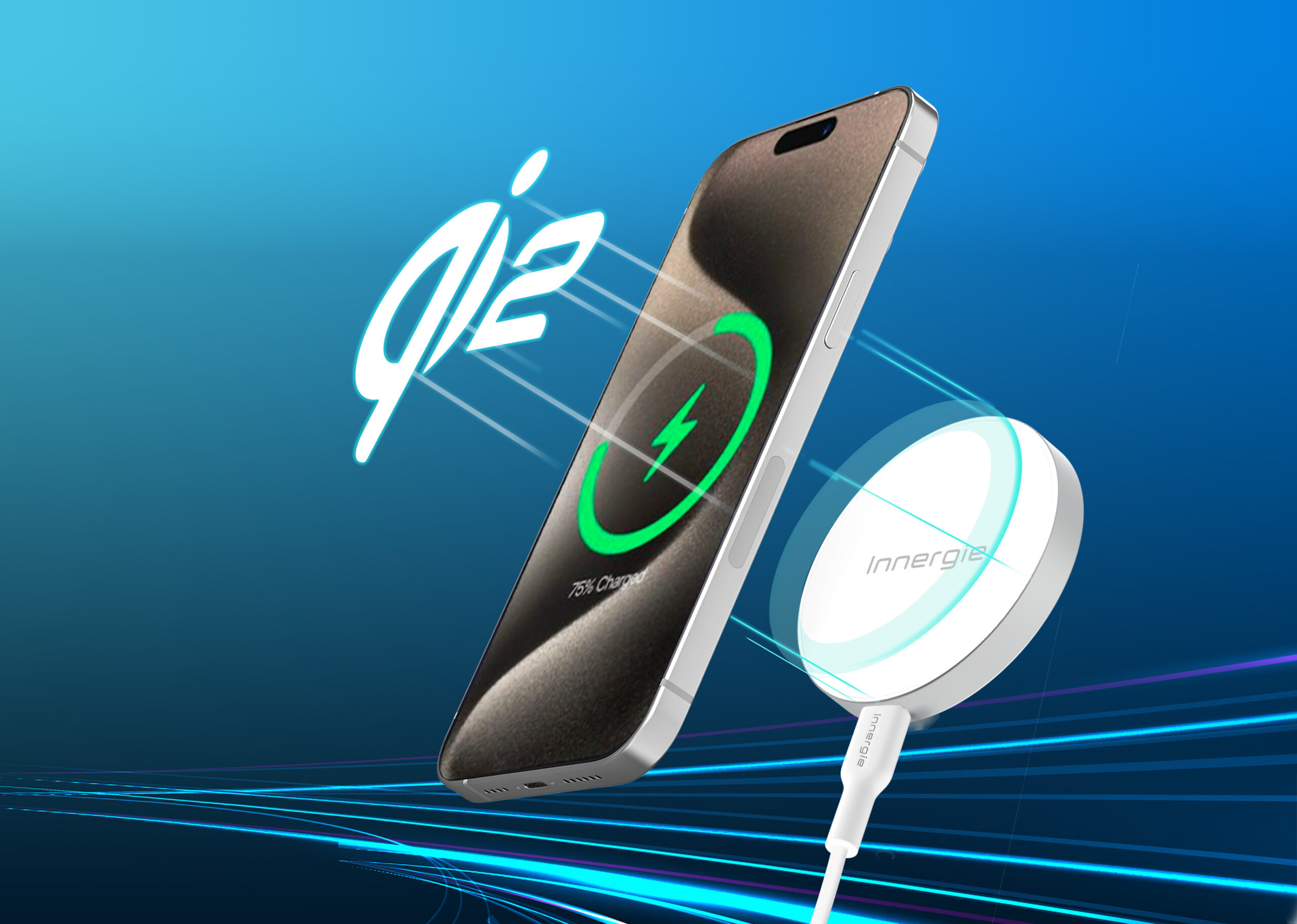Why do chargers sometimes melt or catch fire during charging?
During the charging process, poor charger quality or excessive voltage can lead to short circuits, device damage, or even fires. To ensure charging safety, it’s crucial to choose branded and certified chargers, especially those equipped with protective mechanisms.
InnerShield™ Five Safety Protection Mechanisms
Innergie, following Delta’s technology, maintains stricter internal standards and incorporates the InnerShield™ protection mechanism across its entire product range:
- Overcurrent Protection (OCP): The charger automatically shuts off when the output current is too high.
- Overvoltage Protection (OVP): The charger automatically shuts off when the output voltage is too high.
- Overheat Protection (OTP): The charger automatically shuts off when it becomes too hot.
- Overload Protection (OPP): The charger automatically shuts off when the power output is too high.
- Short Circuit Protection (SCP): The charger automatically shuts off in case of a short circuit in the phone charger.

Develop 6 Good Charging Habits
- Avoid Overcharging: It’s recommended to unplug the charger when the battery is fully charged.
- Don’t Wait Until It’s Dead: Avoid letting your phone’s battery drain completely, as this can reduce battery life. Start charging when it’s below 20%.
- Optimal Charging: Keep your phone’s battery between 20% and 80% to extend the lithium battery’s lifespan.
- Maintain Normal Temperature: Avoid exposing your phone to extreme high or low temperatures and refrain from using it while charging, as these can lead to overheating and reduced battery health.
- Unplug Unused Chargers: Unused chargers continue to draw power when plugged in. Unplug them when not in use to reduce long-term energy consumption.
- Regular Cleaning and Use: Periodically clean charging ports, and even for devices not in use for a while, it’s advisable to charge them occasionally to ensure the battery remains usable.




